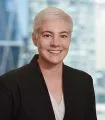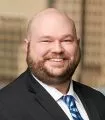Q&A with Arnold & Porter PTAB Practitioner Jeffrey Miller
Jeff has been part of Arnold & Porter's IP practice for 8 years.
How would you describe your practice?
I enjoy all aspects of patent law and am always happy to get involved in all kinds of different matters, ranging from district court and ITC litigation, to PTAB proceedings. Due to my electrical engineering background, I especially enjoy handling patent issues involving electronics, particularly semiconductors.
How long have you been practicing in front of the USPTO and in front of the PTAB?
One of the best pieces of advice I ever received was to take the patent bar exam while in law school. Because I did (and took the exam only a day or two after a hurricane), I have been practicing before the USPTO with a registration number since the end of 1991. My first PTAB proceeding was filed in 2015, but I appeared before the BPAI prior to those matters. I also handled both ex parte and inter partes reexamination proceedings before the AIA established the PTAB.
What do you enjoy about practicing at Arnold & Porter?
The dedication and talent of the team at Arnold & Porter is awe-inspiring. No matter what corner case legal issue I find myself confronting, my colleagues almost always have faced it before me. The breadth of experience is as good as it gets.
What do you like to do in your spare time?
Lately, I spend almost all my free time taking my younger son to his hockey games, and I'm his team's "official" photographer. I'm also a huge music fan and, even at my advanced age, still love to attend live concerts. I just saw Arcade Fire!
Q&A with Arnold & Porter PTAB Practitioner Thomas Carr
Thomas is a registered patent attorney and joined the firm in 2022 after working at another firm.
How would you describe your practice?
I focus my practice on intellectual property matters, particularly in life sciences litigation and counseling. I represent clients in the USPTO, PTAB, district court, and the Federal Circuit. Having a technical background in life sciences, I have worked with clients in a wide range of fields including pharmaceuticals, contraceptives, cell and gene therapies, regenerative medicine, immunotherapy, dermatological compositions, diagnostics, and medical products and devices.
How long have you been practicing in front of the USPTO and in front of the PTAB?
I have been practicing in front of the USPTO for more than three years (and assisting patent-barred attorneys for two years before that). Initially, my focus was on patent prosecution, but has more recently shifted to inter partes reviews.
How would you like to grow your practice before the PTAB and USPTO?
I would like to continue gaining experience in contentious proceedings before the PTAB to round out my practice and better assist clients in IPRs and PGRs.
What do you enjoy about practicing at Arnold & Porter?
The people! Everyone I've met and worked with at Arnold & Porter has been pleasant, helpful and brilliant.
What do you like to do in your spare time?
In my spare time, I enjoy adventuring with my family, cooking and eating plant-based meals and treats, and playing guitar.
Federal Circuit Precedential Decision: Patent Owner Disclaimer During IPR Not Binding on Board
In CUPP Computing AS v. Trend Micro Inc., No. 2020-2262, 2022 WL 16954357 (Fed. Cir. Nov. 16, 2022), the Federal Circuit held that the PTAB is not required to accept a patent owner's claim construction arguments as disclaimer when deciding the merits of those arguments in an IPR proceeding.
In CUPP Computing, the PTAB found the claims of three related patents obvious over prior art that taught a security system processor embedded in a mobile device. In construing the claims, which recited "a mobile device having a mobile device processor different than the mobile security system," the Board rejected patent owner's arguments that it had disclaimed, first during prosecution and then again during the IPR proceeding, a non-remote security system. Specifically regarding patent owner's disclaimer during the IPR, the Board concluded that it could ignore the patent owner's disavowal in construing the claims.
The Federal Circuit affirmed the Board's decision, distinguishing Aylus Networks, Inc. v. Apple Inc., 856 F.3d 1353 (Fed. Cir. 2017), which held that patentee disclaimers during IPRs may narrow claim scope in subsequent proceedings, such as district court infringement actions. The Federal Circuit reasoned that allowing patent owners to modify claims through disclaimer during an IPR would subvert the amendment processes prescribed by Congress by effectively allowing a retrospective claim amendment that is also free from scrutiny for compliance with all patentability requirements.
Board Applies Updated Guidance From Director on the Treatment of Applicant Admitted Prior Art (AAPA)
In a final written decision on remand from the Federal Circuit, the Board in Apple, Inc. v. Qualcomm Inc., IPR2018-01315, IPR2018-01316 (PTAB Nov. 10, 2022) a Board panel applied the updated guidance from the director on the use of AAPA.
The Board's previous FWD had been vacated by the Federal Circuit for incorrectly applying 35 U.S.C. § 311(b)'s "prior art consisting of patents and printed publications" to encompass applicant admitted prior art contained in the challenged patent. Between the remand and briefing on remand, Director Vidal issued updated guidance on the use of AAPA, which provides that "[i]f an IPR petition relies on admissions in combination with reliance on one or more prior art patents or printed publications, those admissions do not form 'the basis' of the ground and must be considered by the Board in its patentability analysis."
Applying the updated guidance, the Board found that it was proper to consider an unpatentability ground that combines AAPA with a patent or printed publication. In doing so, the Board rejected the so-called "point of novelty" test, which looks at the alleged point of novelty of a patent. The Board also declined to examine the "foundation or starting point" of the ground. Although such language appeared in previous guidance regarding AAPA, the updated guidance did not instruct the Board to look at the starting point of a ground.
Board Uses Median Time-to-Trial for District, Rather Than for the Division or Judge, When Analyzing Fintiv Factor 2
On October 6, 2022, a Board panel declined to discretionarily deny a petition for inter partes review, finding that, under the guidelines for median time-to-trial in the Director's interim guidance memo, the Board's statutory deadline for a final decision would be one month before the expected date of the parallel district court trial. Apple Inc. v. Arigna Tech. Ltd., IPR2022-00651, Paper 12 at 8–15 (PTAB Oct. 6, 2022).
Notably, the Board, relying on the Director's Interim Fintiv Guidance, based its analysis of factor 2 on the median time-to-trial for the district. The Board did not agree with patent owner's contentions that the Board should instead rely on the median time-to-trial for the judge and/or division for the parallel district court case. The longer average for the district put the projected trial date after the Board's statutory deadline for a final decision, whereas the shorter average for the particular judge and division (Judge Albright in the Waco division) would have put the projected trial date three months before the Board's FWD deadline. Using the district average in accordance with the Interim Fintiv Guidance, the Board found that factor 2 "weighs against exercising discretion to deny institution."
Board Institutes IPR After Jury Verdict in Related District Court Proceeding Because the Board Found "a Compelling Unpatentability Challenge"
A Board panel instituted review in Code 200, UAB v. Bright Data Ltd., IPR2022-00861, Paper 19 (PTAB Oct. 19, 2022) after finding that the petition presented compelling merits. The decision, a rehearing on Director Remand, comes after Director Vidal sua sponte vacated the Board's earlier discretionary denial based on General Plastic and directed the Board to consider the Patent Owner's remaining arguments, including those for discretionary denial under Fintiv.
Based on the status of the district court litigation, patent owner argued that the Fintiv factors favored discretionary denial. Rather than performing a Fintiv analysis, the Board found compelling merits and declined to discretionarily deny institution under Fintiv based on the Director's Interim Fintiv Guidance.
PTAB's LEAP to Chambers Program Provides Excellent Learning Experience for New Attorneys
On November 9, 2022, the PTAB hosted approximately 30 junior attorneys for its "LEAP to Chambers" event at the USPTO Headquarters in Alexandria, Virginia. The USPTO'sLegal Experience and Advancement Program (LEAP) is geared toward providing training and oral advocacy opportunities for less experienced advocates. LEAP practitioners must have three or fewer substantive oral arguments in any federal tribunal to qualify. Additionally, the PTAB may afford an additional 15 minutes of argument time to each party that chooses to participate in the program.
The LEAP to Chambers event was an opportunity for new practitioners to come together and learn from each other, Administrative Patent Judges (APJs) and senior USPTO officials. The event began with a networking reception where the attendees had the opportunity to connect with fellow practitioners as well as current APJs and USPTO employees. The attendees then broke into groups of two or three and were paired with an APJ for private discussions and tours of PTAB hearing facilities. The discussions with APJs were opportunities for the attendees to gain valuable insight. The APJs shared information and tips related to practicing before the PTAB, and the attendees were able to ask questions and have frank discussions with judges that they may very well be practicing before in the near future.
Arnold & Porter was fortunate enough to be able to send two of the firm's members to attend the event: Associate Alice Ho, as well as former PTAB Judicial Law Clerk and new addition to the firm, Drew M. Needham. Dr. Ho and Mr. Needham both had nothing but positive remarks regarding the program and felt like it provided them with valuable tools for practicing before PTAB. According to Mr. Needham, "the event was an excellent way to further hone my skills as a practitioner, and I recommend the program to any other new practitioner that is interested in jumpstarting their career with LEAP."
The content of this article is intended to provide a general guide to the subject matter. Specialist advice should be sought about your specific circumstances.







